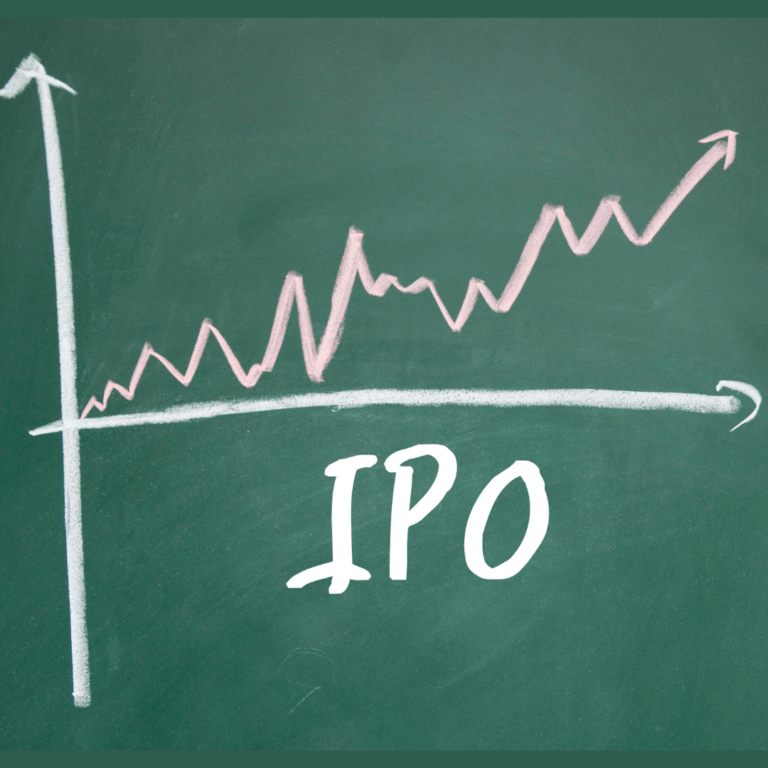SPACs. You can’t read the news these days without hearing about them. This time last year, SPACs were mostly a curiosity, but today, with 128 SPACs having gone public in the first 40 days of 2021, they’ve become a phenomenon–one that clearly speaks to public demand to invest in earlier-stage growth companies. But why have SPACs exploded on the scene? And how can they benefit entrepreneurs? The answers will say a lot about whether they are here to stay or whether they become a footnote to the post-pandemic stock market boom.
A quick SPAC tutorial first. A SPAC is a so-called “blind pool” of capital raised by a SPAC sponsor from investors in the public markets. A SPAC sponsor contributes money up front to operate the SPAC (typically about $6-12M in today’s markets) in exchange for a 20% stake in the initial SPAC.
According to SPACInsider, SPACs have raised more than $38 billion since the start of the year, with an average of $296 million per SPAC IPO. So we’re looking at about $300 million raised per SPAC, which is then held in trust for up to two years, unless and until the SPAC sponsor finds an appropriate target to merge into the SPAC. In exchange, hedge funds that invest in the SPAC receive a guaranteed interest rate on the cash, plus equity warrants that have upside option value if the SPAC completes its mission to buy and operate a company.
All in all, a SPAC can be a good deal for all parties involved, but like anything in life, there’s no free lunch, so let’s examine in what circumstances do SPACs really work to support the entrepreneurial enterprises we care about here at Sapphire.
SPACs 1.0: Birthed in the nether reaches of Wall Street
In order to understand SPACs today, you’ve got to understand how it used to be. If you go back 10-20 years, SPACs existed in the nether reaches of the finance world. They rarely happened, and when they did, it was normally the last hurrah of an aging CEO who was looking for a new gig. This CEO would partner with a dodgy investment bank with a boiler room akin to Stratton Oakmont in The Wolf of Wall Street. From there, said SPAC CEO would find a sleepy, low-growth business that had scale, but no hope of going public on its own. The SPAC would buy the business and insert the CEO in an attempt to improve the performance of the business as a public company. But no shock, more often than not, the performance of these “de-SPACed” companies in the public markets usually wasn’t great.
SPACs 2.0: SPACs become professionalized with PE firms at the helm
About 5-10 years ago, private equity firms realized that a SPAC could be used as another way to raise capital to do exactly what PE firms do: buy a company, shake up the management, cut costs, juice growth and reap profits for the PE firm. They figured that aging SPAC 1.0 CEOs might not have the specific expertise or the back-office support needed to make a SPAC succeed, but as professional investors with a stable of operating executives on retainer, a PE firm could use a SPAC as a higher-risk, higher-reward one-shot private equity fund.
With the arrival of PE firms like TPG and Gores Group to the SPAC party, major tier investment banks like Credit Suisse and Citi moved into the SPAC game, as well. Still, SPACs are relatively uncommon, as most companies with good metrics and predictable performance chose the IPO route, and most quality companies with future IPO potential in the hands of a professional private equity investor chose the cloak of being private to execute a messy turnaround, prior to debuting as an IPO on the public stage.
SPACs 3.0: VCs enter the SPAC game and shake things up
But then came the boom market of the late 2010s, characterized by high growth technology companies fueled by venture capital. In this market, SPACs have become a seemingly viable–and in some cases very attractive–exit strategy for portfolio companies and VCs. It’s difficult to say what exactly caused the timing of this spike in SPACs over the past year, but there have been a few trends bubbling up that have pushed SPACs into the limelight.
- Back in the 1990s, companies could go public with a market cap of $200-$400 million. After the dot-com bubble burst, the bar was raised, and after the Great Recession in 2008, the bar was raised still higher again. That said, even as recently as 10 years ago, it wasn’t uncommon to see a $750M IPO. In the 2010s the bar moved north of $1B. Today, the bar for quality companies with first-rate investment banks is closer to $2B. This continued raising of the IPO threshold has created a large umbrella under which an aggressive entrepreneur or an opportunistic SPAC sponsor can succeed.
- The ongoing easy money environment created by the free-spending U.S. government and fostered by an accommodative Federal Reserve means that institutional investors earn little to no interest on uninvested cash. During most of the 1990s and early 2000s, at least they could get 4-5% total return from cash sitting on the sidelines(1). At under 1% total return for cash assets currently(2), the incentive to enhance those cash returns (with SPAC warrants) is strong, in my opinion.
- The VC game has changed with larger funds chasing an ever-increasing number of unicorn companies, pushed along by strong cloud tailwinds. In this highly competitive environment, some innovative VCs figured out that a SPAC could be used like a one-company VC fund with capital (from the public markets) and expertise (from the VC firm) brought to bear in support of a high growth company in a huge market run by a strong entrepreneurial CEO. This insight has flipped the SPAC world upside down. It’s no longer about replacing a mediocre management team, but instead it’s about supporting and supercharging an existing solid C-suite. The SPAC-sponsor VC firm’s promise to the market and to the entrepreneur is to deliver board-level guidance and a set of value-add services–just as they do for any private portfolio company.
When are SPACs a viable option to go public?
With all of this in mind, where does that leave us in thinking about SPACs, and how they can be useful in backing Companies of Consequence? There are many recent articles reporting the entry of white shoe firms such as Goldman Sachs and JPMorgan into SPAC underwriting and the tsunami of capital entering the market. But few have delved into what really makes a good SPAC these days.
In our view, the IPO market works best when valuations are based on comparable companies that are already public, known as “comps” on Wall Street. With no clear comps, a traditional IPO can be a risky proposition for some companies that may not fit the mold–and one that may significantly undervalue future upside. SPACs help solve this problem by bypassing the normal underwriting process, replacing it with a more bespoke, almost private-market solution.
Let’s take a look at three examples where SPACs may make sense.
- Over the past year, Wall Street has shown that SPACs are an effective tool to take frontier tech companies public, including companies that are pushing boundaries in the space and EV sectors. Our friends in healthcare VC investing have historically financed biotech investments in the IPO market with no revenues, so it’s good to see this same paradigm applied to tech companies trying to tackle similar long-range problems facing society.
- There’s a rising trend in the success of using SPACs to acquire high growth sports gambling, eSports and connected fitness companies such as DraftKings, Skillz and Beachbody. What do these companies have in common with frontier tech companies? No clear public market comps.
- Disruptors in highly-regulated industries are also good candidates for SPACs. Take Sapphire portfolio company 23andMe, for example. 23andMe recently announced a transaction merging with a SPAC (known as a “de-SPAC”). So why a SPAC and not a typical IPO for 23andMe? It’s initial business model was based on achieving high growth by selling consumer DNA test kits. As 23andMe evolved, it made plans to use that never before aggregated genetic data for novel therapeutic drug discovery–a business model pivot without comparison. With no clear comps, it’s our belief that the customized investor education process inherent in the de-SPAC process became the obvious choice for 23andMe.
The full story on SPACs is still being written
If SPACs continue to be used to take disruptive companies public, we believe their future will be bright as a useful tool for entrepreneurs and VCs alike. But the SPAC market should also have a “proceed with caution” sign on it. VC-backed SPACs can be a great idea when only a handful of them exist, but with so many now pursuing the same SPAC dream, hundreds of SPACs are in search of great companies to acquire and take public. With about 50 traditional tech IPOs happening in a typical year, there are simply not enough winning companies ready to enter the public markets via a SPAC transaction.
Furthermore, because SPACs provide the opportunity for companies to go public that would otherwise not be able to via the typical underwriting process, it feels inevitable that we will start seeing companies go public that don’t necessarily deserve to be public–either because the underlying economic model is not yet working or because the company’s systems and procedures aren’t yet up to meeting Wall Street’s demand for predictable quarterly reporting. Ultimately, if there are too many companies crashing the SPAC party, the party will get broken up and everyone will have to go home.
While we don’t know what the future holds, here at Sapphire we are excited by the opportunities SPACs offer as part of the toolkit to finance entrepreneurs in building great technology companies. SPACs provide the prospect of the public markets returning to a paradigm of accepting incredible companies as IPOs earlier in their capital raising lifecycle–a return to the days of The Four Horsemen of Growth.
If promising enterprise software companies don’t need to cross the $100M ARR threshold to go public as a result of the SPAC boom, then SPACs will have done us all a great service in nurturing innovation in the U.S. capital markets. Only time will tell, but if tech start-ups have another option to grow and flourish, then we see that as a good thing and we look forward to seeing how SPACs evolve as a vehicle to finance innovation.
(1) “cash returns” refer to 3 Mo T bills over the time period from January 1990 to December 2008, source https://fred.stlouisfed.org/series/TB3MS (2) “cash returns” refer to 3 Mo T Bills as of January 1, 2021, source:https://fred.stlouisfed.org/series/TB3MS




